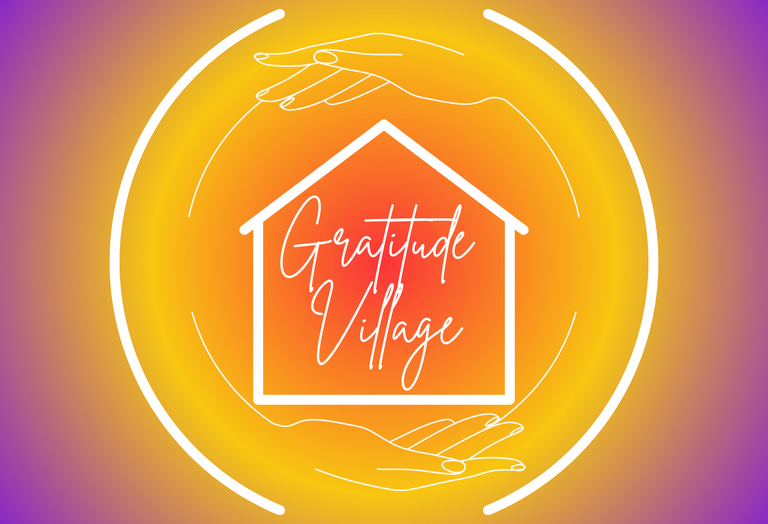Join our next In Person Info Session December 13 from 11am-1pm MST
Aging in Community: The Benefits, the Challenges, and the Everyday Joys of Not Being Alone
Aging in community offers something that traditional housing often can’t: connection, ease, and a sense of belonging. Instead of facing the challenges of aging alone, cohousing for seniors and older adults creates everyday opportunities for mutual support, shared resources, and vibrant social connection. At Gratitude Village Colorado, we’re designing a multigenerational, mixed-income cohousing neighborhood where aging well means living in a place that’s practical, affordable, sustainable, and full of meaningful relationships. From reducing costs and increasing convenience to fostering emotional well-being, aging in community is about more than where you live — it’s about how you live.
Gratitude Village
10/12/20255 min read


When people talk about “aging in place,” they often imagine staying in their own home for as long as possible. But what if “place” didn’t just mean the walls around you — what if it meant being part of a village? What if growing older didn’t have to mean growing more isolated? More and more people are asking these questions, and many are finding an answer in cohousing. Aging in community offers something both simple and profound: the ease of connection. It means living in a place where you’re not alone, even when you want solitude. It’s about being seen, known and supported as the seasons of life change.
At Gratitude Village, we often talk about belonging, sustainability, and affordability. But we also talk about how life actually feels when you live in a place where connection is woven into everyday life. For older adults — and for those planning ahead — aging in community can make life easier, more practical, more economical, and yes, more joyful.
🌱 The Gift of Everyday Support
Let’s start with the obvious: when you live in community, you’re not doing everything alone. Whether it’s carrying in groceries, sharing a meal, shoveling snow or picking up a prescription, small acts of neighborly support make daily life simpler. In traditional neighborhoods, it’s easy to feel like you shouldn’t “bother” anyone. But in a cohousing community, helping each other is part of the culture. You know your neighbors, and they know you. That simple fact can ease the strain of daily logistics as you age.
Many residents in established cohousing communities talk about how practical help flows naturally. If someone needs a ride to a doctor’s appointment, there’s usually a neighbor willing to offer. If you’re recovering from surgery or illness, it’s not unusual for people to show up with soup, walk your dog, or bring in the mail. These are small gestures, but they create a deep sense of security.
🏡 Convenience That Comes from Connection
When we ask future residents what they most look forward to about aging in community, the answers often aren’t grand or complicated. They’re about everyday ease:
Not having to drive everywhere.
Having someone nearby to check in.
Knowing that if the power goes out, you're covered by our solar storage and you’re not alone.
Having company for a walk or a shared meal without needing to schedule weeks in advance.
The opportunity to downsize, if you want, and stay within the same community
Having a home built with aging in place in mind.
In cohousing, these conveniences don’t come from a service or an app. They come from relationships. This is one of the most overlooked benefits of community life: when you build real connections, everyday life becomes more practical and less stressful. You have a safety net that isn’t institutional — it’s human.
💸 Economical Living Without Sacrificing Independence
Aging in community can also be more economical than aging alone. Shared spaces and resources reduce individual costs. Instead of everyone maintaining their own lawn equipment, snow blower or guest suite, the community shares. This means less to buy, less to maintain, and less to worry about. Some communities have shared cars or car-sharing programs, which can save thousands of dollars each year for those who no longer need — or want — to own a personal vehicle. Utility costs can be lower, bulk purchasing is easier, and shared infrastructure (like solar power or composting) makes sustainable choices more affordable. These practical savings aren’t just about cutting costs — they create breathing room. They make it possible to age with dignity without being stretched thin financially.
✨ Emotional Well-Being and Belonging
Perhaps the biggest gift of aging in community isn’t material at all. It’s emotional. Loneliness and social isolation are increasingly recognized as serious health risks for older adults, on par with smoking and obesity. But in community, connection is built in. It doesn’t mean you’re surrounded by people every minute — it means you have natural opportunities for interaction woven into daily life.
You might step out of your door and find a neighbor tending the garden, someone walking their dog or a pot of coffee brewing in the common house kitchen. These casual, unplanned moments of contact help people feel rooted. They make it easier to stay engaged, curious and active, even as life changes. And when harder moments come — a health scare, the loss of a loved one or simply the everyday challenges of aging — there’s something profoundly reassuring about not facing it alone.
🧭 Navigating Challenges Honestly
Of course, living in community isn’t a magic solution. There are real challenges to aging in cohousing. It requires learning to navigate shared decision-making, balancing personal privacy with community involvement and adapting to different communication styles. Some people worry about losing independence or about whether they’ll feel pressured to participate in things they don’t want to do. Those are valid concerns — and they’re exactly why clear agreements, good governance and a culture of respect matter.
In strong communities, participation isn’t forced; it’s chosen. Privacy is valued just as much as connection. And the most successful cohousing neighborhoods are those where people of all ages — from toddlers to elders — are honored as individuals while being part of something larger. Another challenge is planning ahead. To age well in community, it helps to be proactive. That might mean adjusting expectations, contributing to discussions about accessibility or helping shape the culture you want to live in. Aging in community works best when people choose it before they need it.
🌿 Making Life More Fun
Practicality and economics are important — but so is joy. One of the most surprising benefits many elders describe after moving into cohousing is how fun life becomes. There are shared meals and game nights, music in the common house, spontaneous walks, movie screenings, gardening projects, and plenty of laughter. You don’t have to plan everything weeks ahead or drive across town to see friends. Life unfolds more organically and friendship is just a few steps away. For some, this rekindles a sense of adventure. For others, it brings back a kind of daily joy and ease they hadn’t felt in years.
🧡 The Gratitude Village Approach
At Gratitude Village, we’re intentionally creating a multigenerational community that supports aging with dignity, connection and purpose. Our plans include accessible homes, shared spaces for gathering and infrastructure that makes sustainable living practical and affordable. More importantly, we’re building a culture of care and respect, where people can both offer and receive support as life changes. Aging in community here won’t mean giving up independence — it will mean being part of something bigger. We know this works. We’ve seen it in cohousing communities across the country. People age better when they’re connected. They live longer, healthier, happier lives. And they do it together.
✨ Belonging Is the Real Benefit
At the end of the day, what makes aging in community so powerful isn’t just what gets shared — it’s what’s felt. It’s the reassurance that you belong somewhere. It’s the quiet knowledge that if something happens, you’re not alone. Yes, it can make life easier, more practical, more affordable, and more fun. But perhaps most importantly, it makes life richer.
COMMUNITY
Join us in embracing nature, diversity and connection.
Sustainability
DIVERSITY
info@gratitudevillageco.com
720-689-4821
© 2025. All rights reserved.
AFFORDABILITY
Gratitude Village Inc. is a 501(c)3 charitable corporation that values diversity, equity, and inclusion as essential to our mission
Subscribe to our Substack
Refund Policy




Gratitude Village is a Proud Member of these organizations
